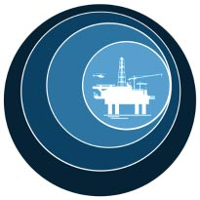OCS Offshore Releasable Well Log Data
Well logging is actually used not just for water wells, but also for oil wells. Researchers also use well logging as a means to perform geothermal, geotechnical, and environmental studies. Well logs tell researchers how deep certain formations are and what types of formations are present underground.
Well logs are used while drilling to determine a well's suitability and to record any events, such as any problems that occur, along with what kind of formations are being drilled through. This information is then used to determine if the formations are desirable ones or undesirable ones depending on the type of well. Well logs also tell workers whether a water well has enough water or whether an oil well has enough oil. They also tell workers whether the oil or water from a well needs additional treatment before it can be used commercially.
Types of Well Logs
Here is a list of just some of the types of well logs that are currently being used.
- 1. Electrical resistivity well logs tell you how hard it is for an electric current to pass through a formation. This is also an indication of whether the water in the potential well is fresh or salty. (Salt water conducts more electricity making it easier for the electric current to pass through.)
- 2. Acoustic well logs tell you how easy it is for sound waves to travel through the formation. This is useful to see if water is present in the formation.
- 3. Gamma ray or radioactivity well logs let you know how much shale is present in the formation.
- 4. Induction well logs take the place of electrical resistivity logs when working with wells containing oil or air.
- 5. Spontaneous potential (SP) well logs tell you how porous or permeable the formation is.







